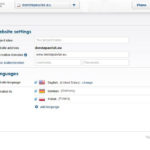What reference materials does your game translator need
Translation and localisation of games requires much more than delivering text files with strings. Translators are not telepathists, so to produce the best quality of the localised game, you will have to provide them with a sufficient amount of reference materials. Depending on the game genre and context as well as on the localisation level (packaging and manual, partial localisation or full localisation), different types and amounts of reference materials will be considered as “sufficient”.
Of course, the best solution is to let your translators play the game for a few days (or longer if it’s MMORPG) to give them an opportunity to familiarize themselves with the gameplay, context, layout, characters, menus and all necessary factors that influence the translation process. However, if this approach is not possible, try to deliver the following resources along with the source texts for translation:
Screenshots
Very important to have a preview of the localised content. The most helpful screenshots should include menu lists, images of characters and items, text boxes and important action scenes. With this information translators will be able to adjust the text length and translate menu items or character description in an appropriate way.
Style guides
Style guides of the source text can help to understand the general context of the game and produce a style guide of the target language. Similarly, a list of common terms from the source text will be helpful to prepare a similar list in the target language. This will contribute to ensuring consistency of the localised text.
Translation memories and materials from a previous release
If the game is a sequel of a previous title or its content is similar to an earlier released product, consider providing your translators with appropriate materials of the previous versions. Again, this will help to ensure consistency and provide more context for new translation. Remember to deliver any translation memories (TM) of the previous translation to allow your localisers to use similar terms and style.
Graphics
In case of packaging localisation, deliver its image to your translators to let them see how the text is displayed and how it is related to any pictures on the packaging.
Audio files
If a game includes a script that has to be translated, deliver a sample of the recording to give background information of every character. The way they speak, their pace, style, accent and dialect refer to the personality of the characters, which has to be reflected in the localised version and may have an influence on the translation of the dialogues. If audio files are not available, provide your translators with a brief description of the type of speech, accent and pace of every character, as well as the expected perception of their speech.
Extra information for correct grammar use
In some languages, as for example in Polish and German, adjectives change their form depending on the noun that they refer to. For this reason, it is important to provide a context for single word strings to specify the gender of the adjective and translate it accordingly. Similarly, remember to specify the gender of the game characters, as in such languages as Polish or Russian verbs take on different inflectional ending depending on the gender of the subject.
Providing all this information will help to achieve high quality and consistency, as your translators will be aware of the context and specific game features. It will also reduce the time needed to answer questions received during the translation process, as your translators will have a broader understating of the localised game.
[wysija_form id=”1″]
